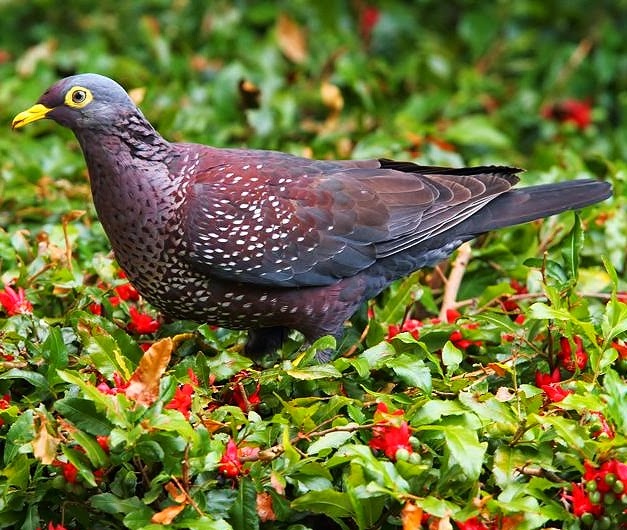 |
| Photo by Adam Riley (Stellenbosch Birds) |
Common name:
African olive-pigeon (en); pombo-d’olho-amarelo (pt); pigeon rameron (fr); paloma ojigualda (es); oliventaube (de)
Taxonomy:
Order Columbiformes
Family Columbidae
Range:
This African species is patchily distributed from Ethiopia, through Uganda, Kenya, Tanzania and Mozambique into eastern and southern South Africa, and through Zambia and southern D.R. Congo into Angola.
Size:
These birds are 37-42 cm long and weigh 300-450 g.
Habitat:
The African olive-pigeon is mostly found in moist tropical forests and riverine forests, also using mangroves, scrublands, alien tree plantations and urban gardens and parks where there are plentiful fruit trees and scrubs. They are present at altitudes of 300-3.200 m.
Diet:
They feed almost exclusively on the fruits of a wide variety of native and alien plant species, also taking some fallen seeds an nuts occasionally.
Breeding:
These birds can breed all year round. They are monogamous and both sexes help build the nest, a circular platform of twigs, with a depression in the middle, sometimes lined with leaves. It is placed in a fork in a tree up to 15 m above the ground. The female lays 1-2 white eggs which are incubated by both parents for 17-20 days. The chicks are fed by both parents and fledge 19-20 days after hatching.
Conservation:
IUCN status – LC (Least Concern)
This species has a very large but patchy breeding range and is reported to be uncommon to frequent and locally common. The population is suspected to be declining overall owing to hunting and habitat loss, although it has increased in South Africa owing to protective measures.







